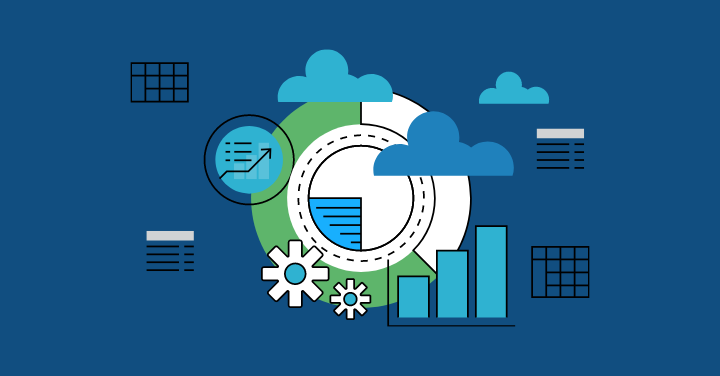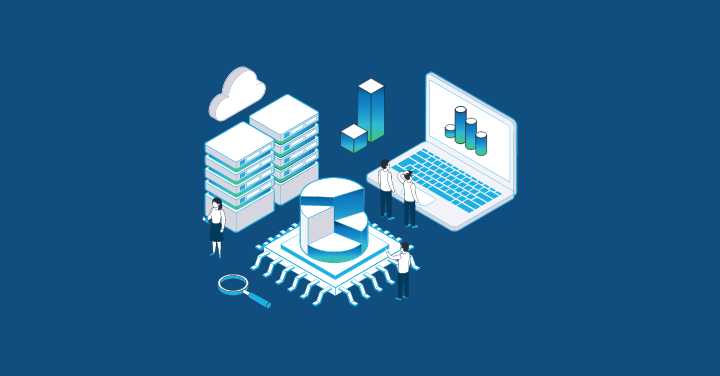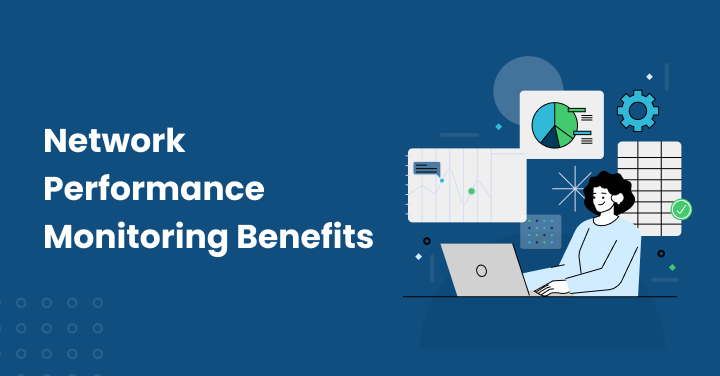Introduction
If you’re dealing with edge computing or IoT in your business right now, you’ve probably noticed the landscape is changing fast.
Most industries—think manufacturing, healthcare, retail—are seeing a surge in connected devices operating out at the network’s edge.
We’re talking about sensors tracking equipment status, devices keeping track of inventory, monitors in hospital rooms.
According to Gartner, there’ll be over 15 billion IoT devices by 2025. That’s a massive, distributed ecosystem that’s both exciting…and kind of intimidating.
But here’s the catch: the more devices you add, the more complex your network gets. Outages? Latency? Security worries? Suddenly, running blind just isn’t an option anymore.
A network issue at the edge can mean real business losses—think lost data, operational delays, or compliance headaches. The reality? Without serious network monitoring, your edge and IoT investments just aren’t protected.
In this post, we’ll break down why network monitoring tools is now a must-have for edge and IoT, what makes these environments uniquely tricky, and what it takes to keep things running smoothly.
Let’s get into the real-world business impacts of monitoring software, without the fluff.
Understanding the Unique Challenges of Monitoring Edge and IoT Networks
Let’s get real: One of the first things any IT manager spots in IoT or edge setups is just how many devices are in play.
Think hundreds or even thousands of sensors, cameras, beacons—all connected, all scattered across different locations.
That’s a big leap from your typical office network. The sheer scale means network performance is paramount, and any performance issues can result in tumultuous situations when it comes to handling a high volume of connections, collecting tons of data from devices spread different computer networks far and wide.
Most teams find that these huge traffic patterns become overwhelming, thus preventing them from having a clear picture of the entire IT infrastructure.
You can’t rely on old-school network monitoring systems, device-by-device checks or daily CPU usage anymore.
A lot of edge and IoT devices just aren’t built for heavy lifting, especially in real time.
Many have limited processing power, barely-there local storage, and run on batteries (sometimes for years) that makes the entire process of network management.
What we see is that traditional monitoring tools are often too demanding—they suck up bandwidth and slow down devices in the network infrastructure.
If you try to push these performance monitoring agents onto these endpoints, you’ll overload them.
Bottom line: monitoring needs to be ultra-lightweight and mindful of resources to prevent packet loss, or else you risk draining batteries and crippling device performance.
Here’s another big hurdle: No two IoT or edge environments look the same in the entire network.
Devices from different vendors or service providers all running their own firmware, with varying standards for communication and security.
From Zigbee sensors to LTE cameras, and everything in between. This diversity makes it almost impossible to use one-size-fits-all monitoring and also understand the root cause when there’s trouble.
Most teams struggle connecting all these pieces together, and gaps in visibility start showing up fast, ill-impacting the overall network health.
Thus, you need a network application performance monitoring solution that can handle multiple tasks simultaneously and provide complete visibility.
Let’s say your edge devices are in a remote warehouse or halfway across the globe. Spotty network components and unpredictable latency are just part of the deal.
For applications that rely on real-time or near-real-time data, even a few seconds of lag can spell trouble.
Standard, always-online network availability won’t cut it. What you need is a comprehensive server monitoring that allows the network admins to handle outages gracefully—cache data, send alerts when connections drop, and help prioritize the most important signals.
If not, you’re left guessing when problems hit, eventually reducing the overall user experience.
With great connectivity comes…well, a much bigger attack surface.
Every new device on the network is a potential entry point to potential problems.
We’ve all seen the news—compromised IoT cameras or edge nodes used for botnet attacks, data theft, and industrial sabotage.
Unmonitored devices that doesn’t reply on performance metrics are sitting ducks, especially when you are handling a critical project.
The risk is real, and because edge environments often don’t have the same network monitoring softwares as central data centers, continuous network performance monitoring for unusual behaviors becomes non-negotiable.
Key Aspects of Effective Network Monitoring in Edge and IoT
So, what’s the first must-have for running smooth network operations? The answer is, real-time visibility. Most businesses need to know—right now—if something’s wrong.
That means continuous network monitoring, able to collect data from every device and node. Also for the network administrators, it is not just bandwidth usage, but also device health (is it online? is the battery low?), traffic flows, app performance, and security indicators.
The challenge is, in edge and IoT, you’re dealing with device data that isn’t always in the same place, making network visibility even more difficult.
Centralized tools help bring it all together, so you can see what’s happening before something blows up.
Here’s the thing—heavier network monitoring solutions just don’t fit edge or IoT setups.
You need tools that barely touch device resources and can scale from a handful of locations to thousands of endpoints.
Think edge-native agents, or even lightweight protocols like MQTT or CoAP. What works best is something you can deploy once and trust it won’t bog down the network.
Don’t forget: as your environment grows, the monitoring platform should keep up without adding a ton of operational overhead.
With so many devices, traditional threshold-based alerts will drown you in noise.
What we see now are organizations turning to AI-powered analytics that baseline normal behaviors and flag actual anomalies—think temperature drift, abnormal device chatter, or weird traffic spikes.
These systems learn what’s normal for your environment. Pro tip: don’t forget to tune your anomaly detection so it doesn’t trip on every blip, but still catches the real threats.
Tools like Motadata provide built-in anomaly detection, so your team can focus on real risks instead of sifting through false alarms.
Managing one site is one thing. Managing dozens—or hundreds-of—of distributed edge and IoT sites is a whole other ballgame.
The best solutions give you a single pane of glass—a centralized dashboard to manage, configure, and visualize what’s going on everywhere.
Still, the monitoring itself happens close to the devices for better performance and resilience.
Look for platforms that offer this hybrid approach: centralized oversight, distributed agents. That way, teams can spot issues quickly wherever they pop up.
Security isn’t just a checkbox—it’s woven into all your monitoring. From detecting unusual traffic (is an IoT device suddenly making outbound calls?) to spotting signs of compromise or malware, network monitoring is your first line of defense.
What we recommend: Watch for deviations from device baselines, unexplained bandwidth jumps, and repeated connection failures.
Security-focused monitoring, like what Motadata offers, helps you react fast to emerging threats before they become expensive problems.
The Future of Network Monitoring in Edge and IoT
The reality? Manual network monitoring started falling behind the curve years ago.
With billions of devices out there, AI-driven tools are quickly becoming the default.
Think predictive analytics, self-healing networks, and automated response to common issues.
Some platforms even let you set remediation playbooks—so, if an IoT camera misbehaves, the system isolates or resets it automatically. That’s less downtime, happier customers, and more sleep for your team.
Expect more solutions purpose-built for the edge. That means agents and collectors that run with almost no resources, tools that communicate over constrained networks, and analytics that happen locally, right at the edge.
Here’s a trend to watch: network and security monitoring aren’t separate anymore.
Emerging technologies, such as a quantum computing platform, could revolutionize network monitoring by enabling faster data processing and more secure IoT communications.
Unified platforms are fast becoming the standard, providing both real-time performance visibility and immediate security insights.
With cyber risks on the rise and compliance rules tightening up (GDPR, HIPAA, etc.),teams need one place to track it all—latency and threats, uptime and suspicious traffic.
Choosing an integrated solution cuts complexity and keeps you ahead of issues.
It’s no secret: IoT still has a fragmentation problem. Vendors use different protocols, data formats, and management APIs.
Open standards are gaining traction, making it easier to connect diverse devices to monitoring platforms without costly workarounds.
Keep an eye on developments from groups like the Open Connectivity Foundation.
The more you stick to open, interoperable solutions—both for your devices and your monitoring layer—the easier it will be to scale and evolve over time.
Conclusion
So, where does this leave us? Edge computing and IoT are here to stay, but so are their networking challenges.
To really unlock value rather than invite chaos, businesses need serious network monitoring—plain and simple. Sure, these environments add complexity, but modern solutions make it manageable.
The big takeaways: You’ll need monitoring that’s lightweight, scalable, aware of security, and built for a world of mixed and unpredictable devices.
Reliance on old manual processes just doesn’t cut it anymore. Embrace centralized management with smart, edge-aware agents and AI-fueled insights—that’s the new best practice.
Ready to take stock of your own network monitoring? The next step is simple: Evaluate what you’re using today and check out tools like Motadata that are purpose-built for edge and IoT.
At the end of the day, the right monitoring strategy keeps your business agile, secure, and ready for whatever comes next.
FAQs
Network security monitoring for edge computing is different from older networks than it is for the modern networks. It focuses on real-time data and local choices, not just a main control center. Because edge computing is split up, you need special tools to manage the large amount of data. These have to work with all kinds of devices and handle changes fast. This helps people get good results from the way edge systems work.
Network monitoring helps keep IoT devices safe because it lets you watch network traffic as it happens. This makes it easier to find unusual actions or threats in the network. By doing this, you can fix problems early, act fast when vulnerabilities come up, and keep all the devices in the network working as they should.
It can be hard to monitor large-scale IoT deployments. There is often too much data to handle. People have to keep the network working well. They also must make sure each device is safe. It can be tough when many different devices need to work together. Real-time analytics is very important here. This helps teams act fast when they need to. So, it is key to have good monitoring tools. These tools should be able to change as the needs of the environment change.
Yes, AI and machine learning can help make network monitoring much better in edge environments. They give you real-time data analysis, help you spot problems quickly, and make it easier to predict what will happen next. With these tools, you get faster responses when issues come up. They also help use resources better. This is very important to keep IoT applications running well and to make sure everything works as it should.
In IoT and edge environments, it is important to keep a close watch on network devices all the time or at least every few minutes. This way, the network can run well and be safe. Watching the network often helps you spot problems fast, so you can fix them right away. This also helps make the network strong and keeps the service running smoothly for everyone.







